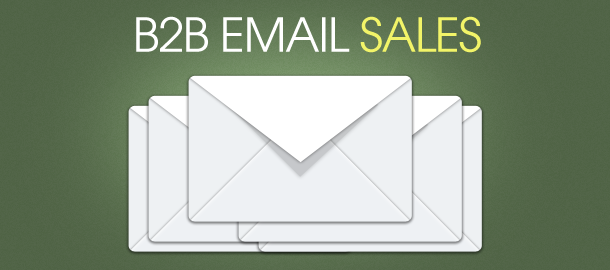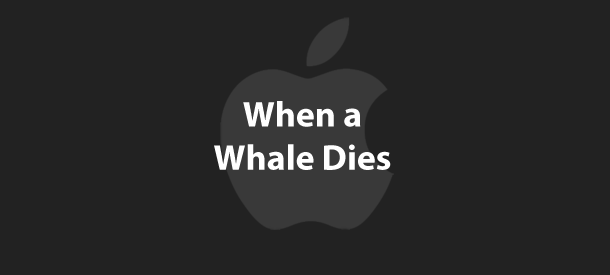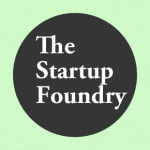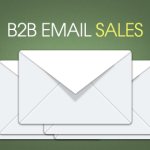It is my first time in Detroit and I am riding shotgun down the main drag that is Woodward Avenue with a long-enough-to-keep-safe lens equipped camera in hand. I sat on the edge of my passenger seat ready to capture some of that choice disaster porn I had heard so much about. In between snapping pictures of what looked to be bombed out buildings, I was struck by the feeling that I was witnessing something truly unshroud. Glide down one street akin to Park Avenue, make a sharp right turn and find yourself smack in the middle of an episode of
The Wire. It felt like I was witnessing weeds bursting from cracks in the cement. Burgeoning culture at its boiling point. I was intrigued. Detroit moved me.
The Motor City has all the moving parts to be a Midwest start-up hub. Creating jobs, tax revenue and adding to the culture of entrepreneurship born on the backs of your blue collar blood line. What you need is entrepreneurs, more than you have and the kind that see building the next soup of the day mobile application as a waste of their ambition. These passionate, persistent folks are out there looking to be intrigued by a problem and supported in a way that makes solving it possible. You can attract and retain these entrepreneurs, thousands of them from across the country. Around the world. And you can do it without relying on tax payer subsidy or other market negative solutions. I will show you how.
Duplicate and Drown
Cities tend to make the mistake of trying to replicate the tech mecca that is Palo Alto, and the surrounding towns collectively known as “The Valley”, as it exists today. More than a few times I have read and overheard officials in different cities say “What we need is an anchor company. If only we had a Facebook, investment and talent would follow.” This is true to the extent that any company growing as fast as the worlds largest social network is always looking to hire but Mark Zuckerberg did not move from his Harvard dorm room out to California simply because you can trip and fall over a computer programmer on your way to lunch. It is safe to say he traveled across country in pursuit of what Silicon Valley represents. The smartest people tackling problems side by side and sharing in the sense of community that comes from succeeding and supporting in the same.
“Import” Is No Longer A Dirty Word
A vibrant entrepreneurial community is an evolution. It is where the void that is commonly experienced problems intersect with the oxygen of ideas, entering into the bloodstream that is a supportive network of entrepreneur advocates. In addition to supporting your existing start-up community, you must import these solution-minded people from other parts of the country to spark your movement and to do that you have to market the problems your city faces and not just the assets you sustain. Entrepreneurs are a special breed. They look at the things most people discard as annoyances and say: I can fix that. You need entrepreneurs and they need you.
Urban Incubation. Global Application.
The problems your citizens face are not unique to Detroit. They are relevant to any urban environment in the US or abroad and as such are what one engaged in such things would refer to as market viable problems. That is that the prospective solutions for those problems have application in a mass market. In my work I communicate with dozens of entrepreneurs each month about their ventures. I find that most of the problems being addressed by these upstarts are a slight variation on something the market has already proven out. Another wards, a niche vertical of a business model made widely popular by a company you know.
A Groupon for this or a You Tube for that. It is as if the inspiration for these models are coming solely from Tech Crunch. Some would argue that this is actually a function of the early stage capital infrastructure but for the purposes of this article, let’s just focus on the opportunity that exists in packaging and presenting the problems encountered by your citizenry to attract those hungry for unique problems to solve.
Pick a Problem. Any Problem.
First, you must look to your citizens for intriguing problems to solve and there are any number of ways to do that. I prefer to enable people to participate in a mostly passive manner. Here is one way. I am working on another here in Philly as I write this. The key is interaction points where people in your community can tell you about the problems, big or small, they encounter. Ideally as they are affected by them as this is where insights are most valuable. Now, after reviewing and cleaning up the way these problems are presented, aggregate them into a live feed on a website and broadcast them to entrepreneurs around the world.
Stand up to the Crowd
When these ambitious folk come about your website linked from one of the hundreds of large tech start-up sites online who will follow and report on a city-fueled platform such as this (especially coming out of Detroit where the National press have found a disaster darling six years post-Katrina), they will see information about your city side by side with your problems listed. You should surely highlight those assets you have touted for years but now, in addition to the tax incentives, low cost of home ownership and beautiful waterfront, you will list your problems or more specifically those problems your citizens see in the course of their daily lives. Remember entrepreneurs like problems and with the click of their mouse, they can open a particular problem and create a crowd funding profile. Something similar to what you might find on Kickstarter. My suggestion would be to integrate this into what you are already doing with Kiva Detroit but it can surely done stand alone. By leveraging your existing network of advocates, giving citizens and expatriated business folk, you can raise say ten thousand dollars to relocate a potential founder to Detroit for an incubation period of 90-120 days. It will be easier than you might think. You also have supportive institutions to look to like that of the Knight and the Kauffman Foundation. In addition to capital it is important to support the incoming entrepreneur with the personal logistics of temporary to permanent relocation. Jack Miner at Tech Town made me aware of the Detroit Orientation Institute, an organization that might be perfectly equipped to lend a hand in this part of the process.
Incubate and Connect
Now that the entrepreneurs you look to support are incoming with solutions on the brain. Full of ambition and feeling supported in their personal efforts, you must also incubate their professional venture. I will leave you to determine what you consider incubation but for me, as I know these folks that would line up to be part of a platform such as this, you need only house them, preferably with fellow entrepreneurs, while connecting them to your existing network of entrepreneur advocates. Open office space in Detroit at the moment is a commodity I imagine and as for facilitating interaction between the new and existing entrepreneurs and mentors, you need do little if any more than create a directory where people can profile themselves and integrate their Twitter profiles and email addresses for communication. Set it up and get out of the way. My City of Brotherly Love has a great example of what I am talking about in something called We Work In Philly.
The entrepreneurs will work for those first months along side their fellows, sometimes splitting off into teams no doubt and iterating concepts in hopes of arriving at what they deem a minimum viable product. That is the bare bones version of the solution they wish to eventually scale into the market. You could if wanted have a demo day every few months where entrepreneurs could pitch early stage investors but I don’t see it necessary. If they are building something that solves a real problem in a usable way, finding investment need not be a dog and pony show.
Seed to Stay
Looking to local early stage venture capital funds and angel groups, those ventures deemed market viable by each individual investment entity will receive enough capital to incubate the start-up out in Detroit for 6-12 months. In most cases, these are going to be relatively nominal investments in the 100 – 200k range.
If an investment fund were focused on investing locally and so inclined, they could model an investment vehicle after the Start Fund. A mechanism first established by uber-angel investor Yuri Milner in where 150K convertible notes were and continue to be given to each accepted start-up into the Y-Combinator accelerator program. Mr. Milner wisely sees that particular start-up shop a filter for his investments. Your city is of course not an incubator so this arrangement with an investment firm, should there be one, would be specific to those companies they deem viable. If you wanted to do it, I would pitch it as a “First Look” deal like television studios have with independent producers. The twist here, and as it happens it is already being done in your own cities start-up accelerator, is adding a residency clause to those companies you seed.
In returning for being the first investors, along with all the other standard fare like right of first refusal and discount share options, your seed round will require the new company to stay and build in Detroit.
Regional economic and workforce development right on your doorstep.
If it seems as though I am overly simplifying the process, you have likely been too long mired in bureaucracy or are accustom to building industrial age businesses. Three hundred page reports and exploratory committees a thriving economy does not build. As it stands, I fear that Detroit flush with tax breaks and subsidies sits mostly in the cross hairs of those that tinker with the boom and bust economy the average Joe now knows all too well. If nothing else, Detroit, rooted in the can-do spirit of factory workers and fisherman, steel workers and small business owners, has the perfect sort of ethic in place to drive the next generation of start-ups out into the world.
If you want to reach out, email me here and follow me here. A big thank you to @HayleyBierkle for first showing me around Detroit and for helping me with drafts of this article. Your city would hard pressed to find a more brilliant and fervent advocate so be sure to say hello to her on Twitter and should you run into her down at Cliff Bells.
—

















